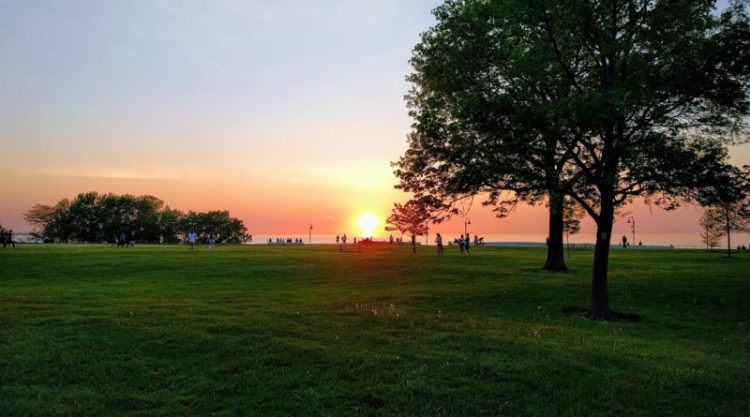Exploring the Weather Wonders of Fortuna, CA: A Coastal Symphony

Nestled on the Northern California coast, Fortuna stands as a picturesque city surrounded by nature’s bounty. Beyond its charming Victorian architecture and rich history, the weather in Fortuna, CA, plays a crucial role in shaping the daily lives and experiences of its residents. In this article, we delve into the unique climate that graces this coastal gem, exploring the seasonal nuances, natural phenomena, and the impact of Pacific influences on Fortuna’s weather patterns.
Seasonal Dance:
Fortuna experiences a classic coastal climate marked by mild temperatures and significant rainfall throughout the year. Summers are cool and foggy, with average highs ranging from 60°F to 70°F. In contrast, winters are characterized by moderate temperatures that rarely dip below freezing. The absence of extreme temperature fluctuations contributes to the city’s reputation as having one of the most pleasant climates in California.
Spring paints the landscape with vibrant hues as the surrounding hills burst into a riot of wildflowers. The temperature gradually warms, creating an ideal environment for outdoor activities. Fall brings a symphony of reds and golds as deciduous trees prepare for winter. The city’s parks and trails become a haven for locals and visitors alike, offering an immersive experience in nature’s seasonal transitions.
Marine Influence:
The Pacific Ocean, with its cool currents and marine layer, exerts a significant influence on Fortuna’s weather. The city sits about 10 miles east of the coastline, allowing the ocean’s impact to shape the climate. The marine layer, a blanket of cool, moist air, often envelops the region, creating the characteristic coastal fog that rolls in during the summer months. This natural air conditioning effect moderates temperatures, providing relief from the inland heat.
The Pacific’s influence is not limited to temperature regulation; it also contributes to Fortuna’s rainfall patterns. The city receives the bulk of its precipitation from late fall through early spring, aligning with the Pacific storm season. The combination of oceanic moisture and topographical features results in a generous amount of rainfall, nourishing the lush landscapes that define the area.
Rainfall Rhythms:
Fortuna’s annual precipitation averages around 40 inches, making it one of the wetter locations in California. The majority of this rainfall occurs between November and April, with December often being the wettest month. The frequent and steady rain contributes to the city’s verdant surroundings, supporting dense forests, meandering rivers, and vibrant vegetation.
The rainfall patterns not only sustain the natural beauty of Fortuna but also play a vital role in the local economy. The abundance of water contributes to the health of agriculture, providing fertile conditions for crops and sustaining a thriving dairy industry. Fortuna’s weather, in this way, becomes a driving force behind the region’s economic vitality.
Stormy Spectacles:
While the majority of the rainfall is gradual and consistent, Fortuna occasionally experiences more intense weather events. Pacific storms, fueled by warm ocean waters, can bring heavy rain and strong winds to the area. These storms, though infrequent, add an element of drama to the weather narrative and underscore the power of nature in shaping the coastal environment.
Local residents are accustomed to the rhythm of these storms, taking necessary precautions to ensure their safety. The storms also highlight the resilience of Fortuna’s community, which has learned to adapt and thrive in the face of the region’s dynamic weather patterns.
Weather and Wildlife:
Fortuna’s diverse weather conditions contribute to a rich ecosystem that supports a variety of wildlife. The combination of mild temperatures and ample rainfall creates an ideal habitat for numerous species, from migratory birds to redwood-dwelling mammals. The city’s proximity to the Pacific Flyway, a major migratory route for birds, adds to the avian diversity, making Fortuna a haven for birdwatchers.
The lush landscapes and temperate climate also support a thriving population of redwoods, providing shelter for species such as the Northern Spotted Owl and the Pacific Giant Salamander. Fortuna’s commitment to environmental conservation is evident in its efforts to balance growth with the preservation of these natural habitats, ensuring that both residents and wildlife can coexist harmoniously.
Community Resilience:
Fortuna’s residents have developed a unique relationship with their weather, embracing the challenges and celebrating the benefits that come with living in a coastal community. The city’s commitment to environmental sustainability and community resilience reflects a deep understanding of the interconnectedness between local weather patterns and the well-being of its inhabitants.
In conclusion, Fortuna, CA, is more than just a quaint coastal city; it is a testament to the harmonious interplay between nature and community. The weather, with its seasonal dances, marine influences, and occasional storms, adds depth to the city’s character. As residents navigate the ebb and flow of Fortuna’s climate, they are not merely observers but active participants in a coastal symphony, where the elements of weather blend seamlessly with the vibrant tapestry of community life.
-
What is the typical climate in Fortuna, CA?
Fortuna, CA, experiences a classic coastal climate with mild temperatures throughout the year. Summers are cool and foggy, while winters are moderate, rarely dipping below freezing. The climate is generally pleasant, making Fortuna one of the more comfortable places to live in California.
-
How does the Pacific Ocean influence the weather in Fortuna?
The Pacific Ocean, located about 10 miles west of Fortuna, has a significant impact on the city’s weather. The cool currents and marine layer contribute to the coastal fog that often envelops the region during the summer months. The ocean also moderates temperatures, providing a natural cooling effect.
-
When is the best time to visit Fortuna, considering its weather patterns?
The best time to visit Fortuna is typically during the spring and fall. Spring offers blooming wildflowers and milder temperatures, while fall showcases vibrant foliage. Summers can be cool and foggy, and winters, although mild, experience more rainfall.
-
How much rainfall does Fortuna receive annually?
Fortuna receives an average annual precipitation of around 40 inches. The majority of this rainfall occurs between November and April, with December being the wettest month. The consistent rainfall contributes to the lush landscapes and supports the local agriculture and dairy industries.
-
Does Fortuna experience extreme weather events, such as storms?
While Fortuna generally has a mild climate, it does occasionally experience more intense weather events, especially during the Pacific storm season. These storms can bring heavy rain and strong winds, adding a dramatic element to the weather narrative. Residents are accustomed to the rhythm of these events and take necessary precautions.
-
How does the weather impact Fortuna’s wildlife and natural surroundings?
The diverse weather conditions in Fortuna contribute to a rich ecosystem. Mild temperatures and ample rainfall support a variety of wildlife, including migratory birds along the Pacific Flyway and species inhabiting the redwood forests. The commitment to environmental conservation ensures a harmonious coexistence between residents and the natural environment.
-
Are there any specific precautions residents take during stormy weather?
While storms are infrequent, residents of Fortuna are accustomed to taking precautions during more intense weather events. Common measures include securing outdoor items, checking for potential flood risks, and staying informed about weather updates. The community’s resilience is evident in its ability to adapt to the dynamic weather patterns.
-
How does Fortuna balance growth with environmental conservation?
Fortuna recognizes the importance of preserving its natural habitats while accommodating growth. Efforts are made to strike a balance between development and conservation, ensuring that the city’s unique ecosystems, influenced by its weather patterns, remain intact for future generations.
-
What role does weather play in Fortuna’s local economy?
The weather in Fortuna plays a vital role in the local economy. The consistent rainfall supports agriculture, providing fertile conditions for crops, and sustains a thriving dairy industry. The economic vitality of the region is closely tied to the abundance of water and the city’s ability to adapt to its weather patterns.
-
How can residents and visitors make the most of Fortuna’s weather?
Fortuna’s weather offers various opportunities for outdoor activities. Residents and visitors can explore the city’s parks and trails, enjoy the blooming wildflowers in spring, and immerse themselves in the vibrant fall foliage. Staying informed about the seasonal changes allows individuals to make the most of Fortuna’s diverse climate throughout the year.






